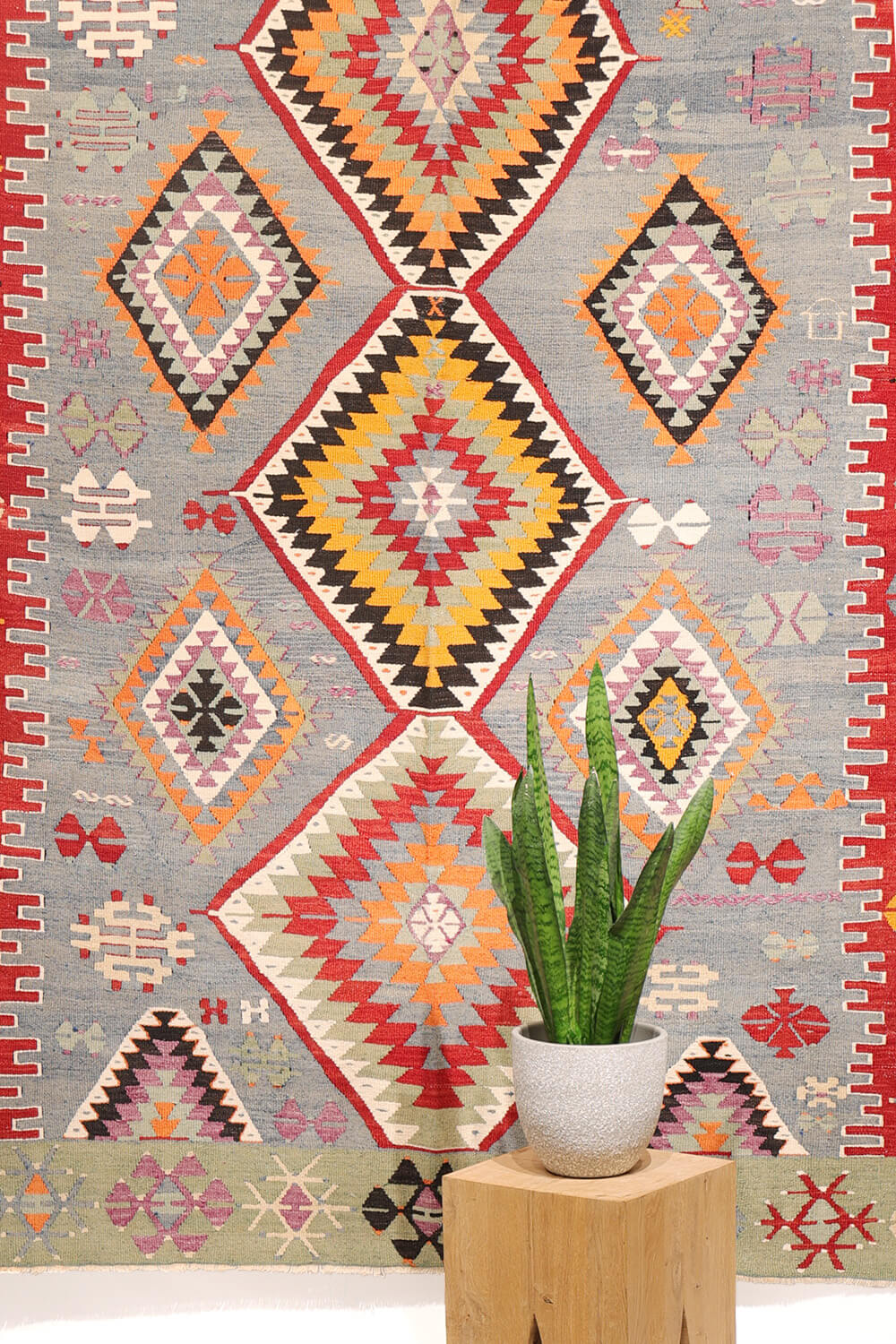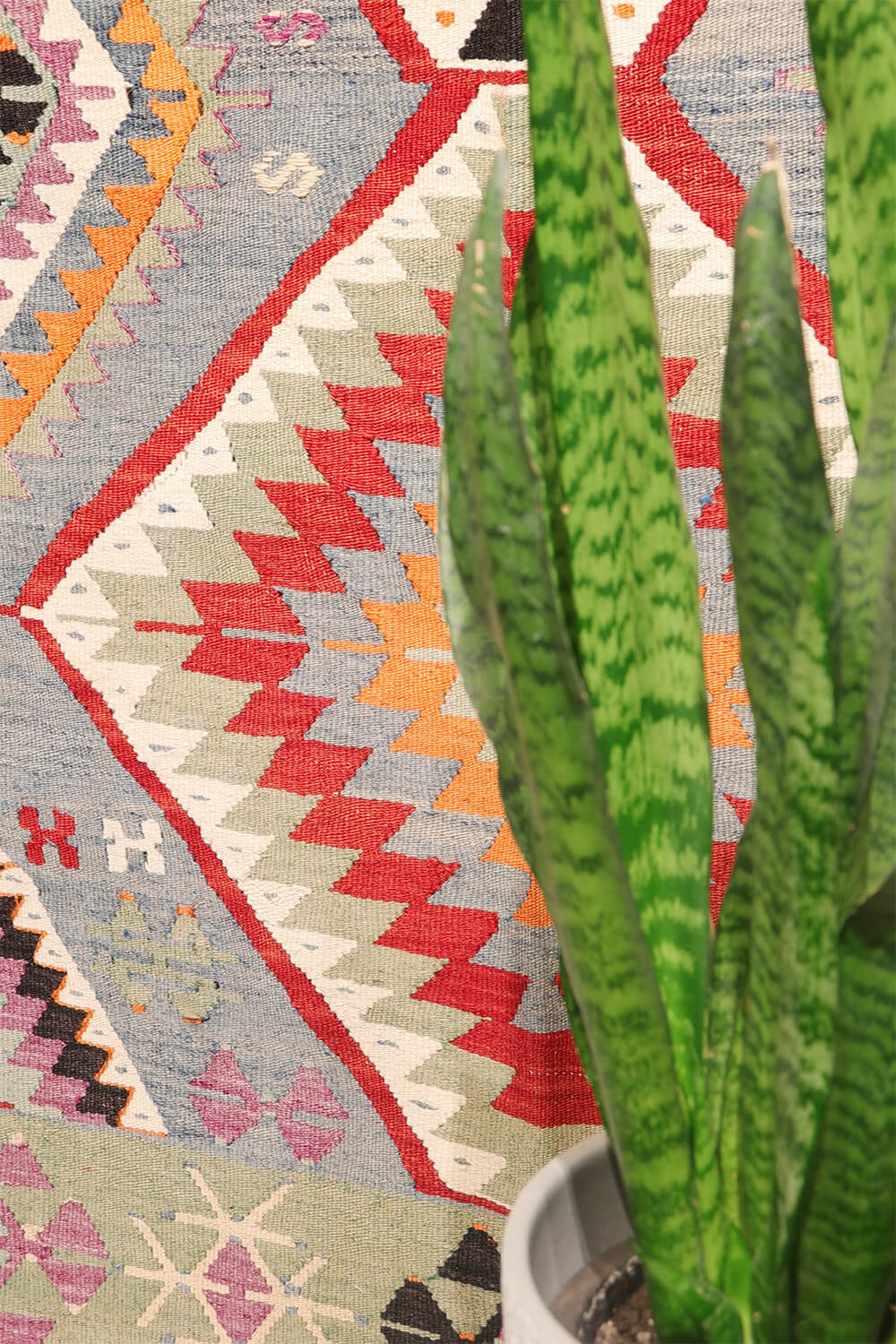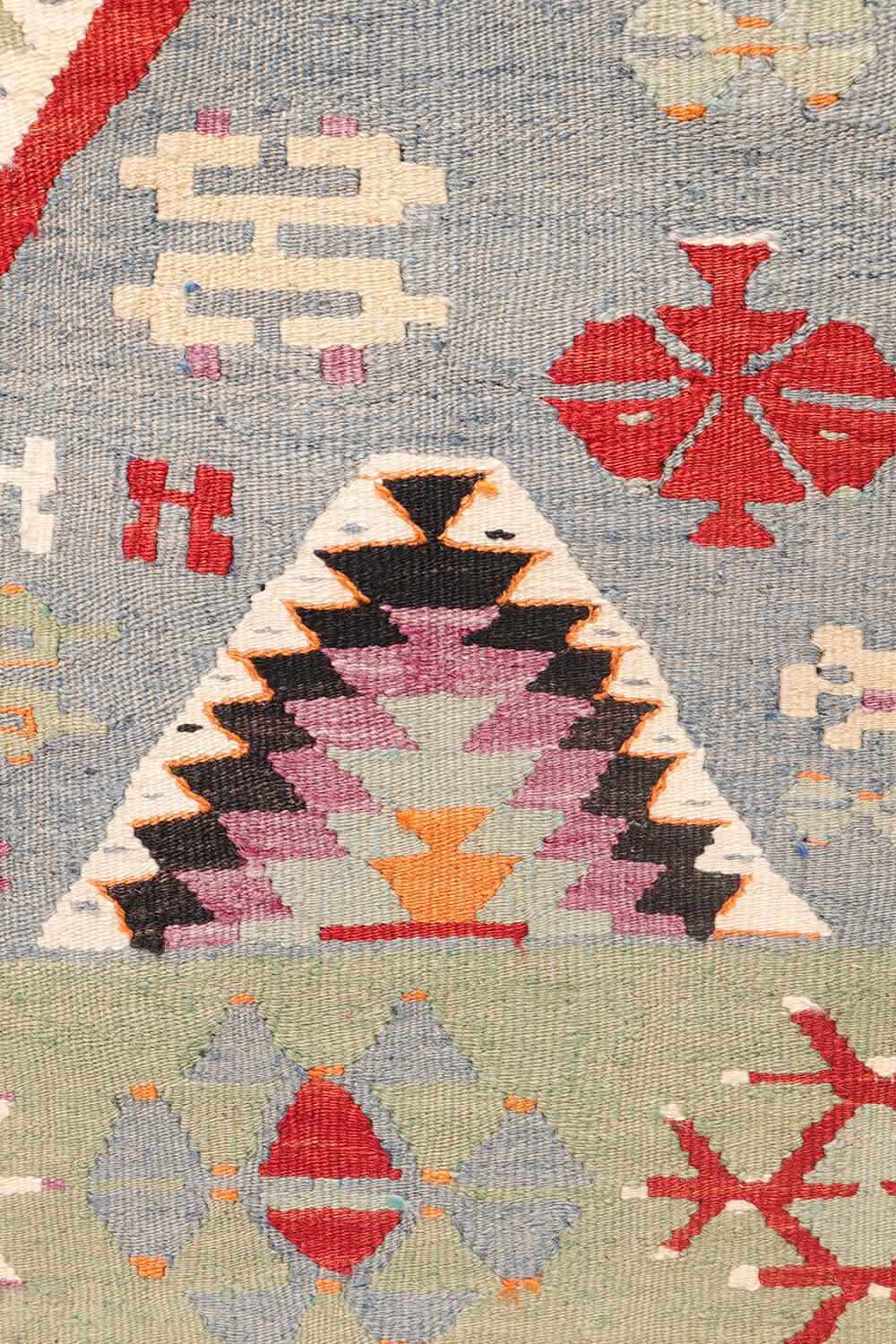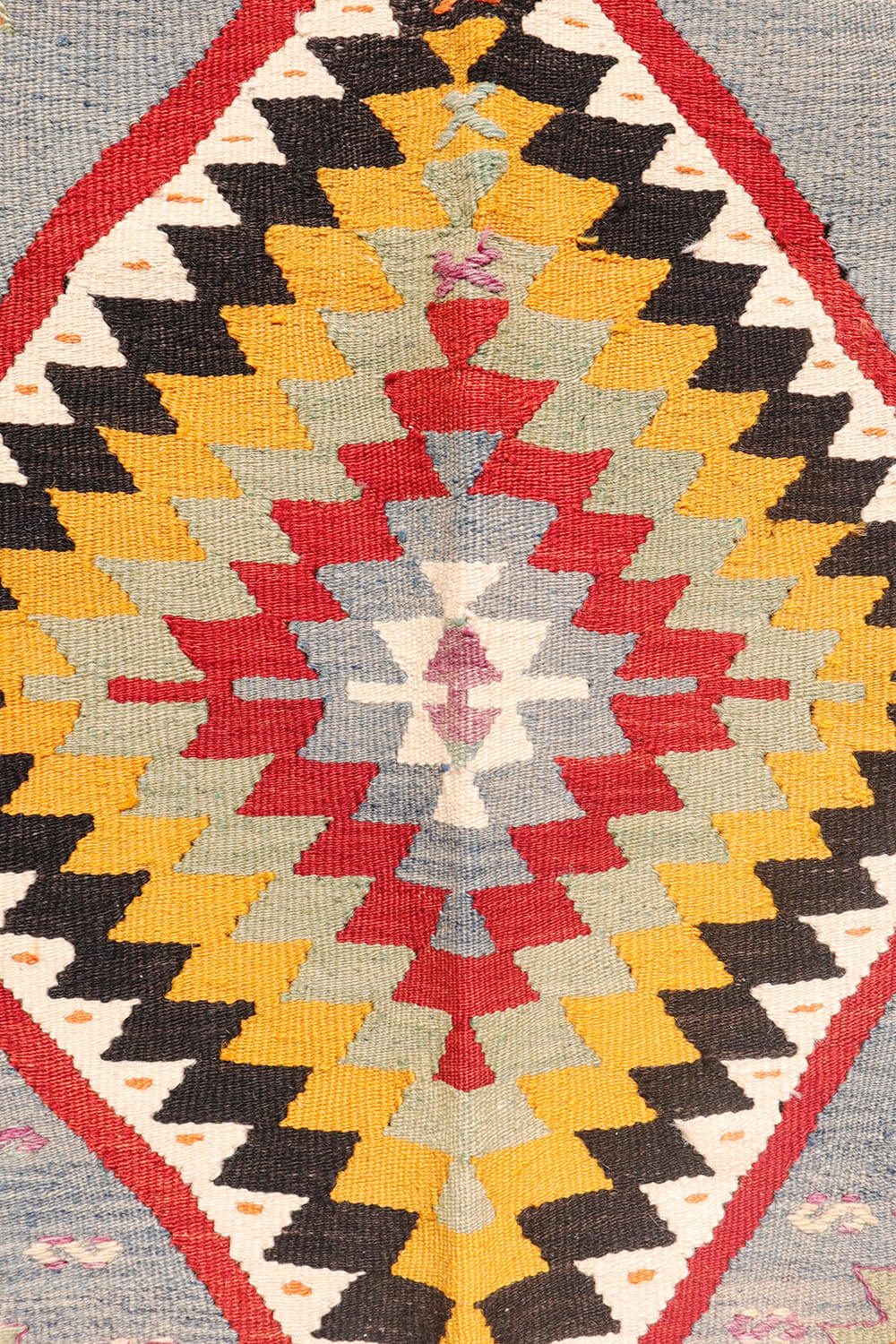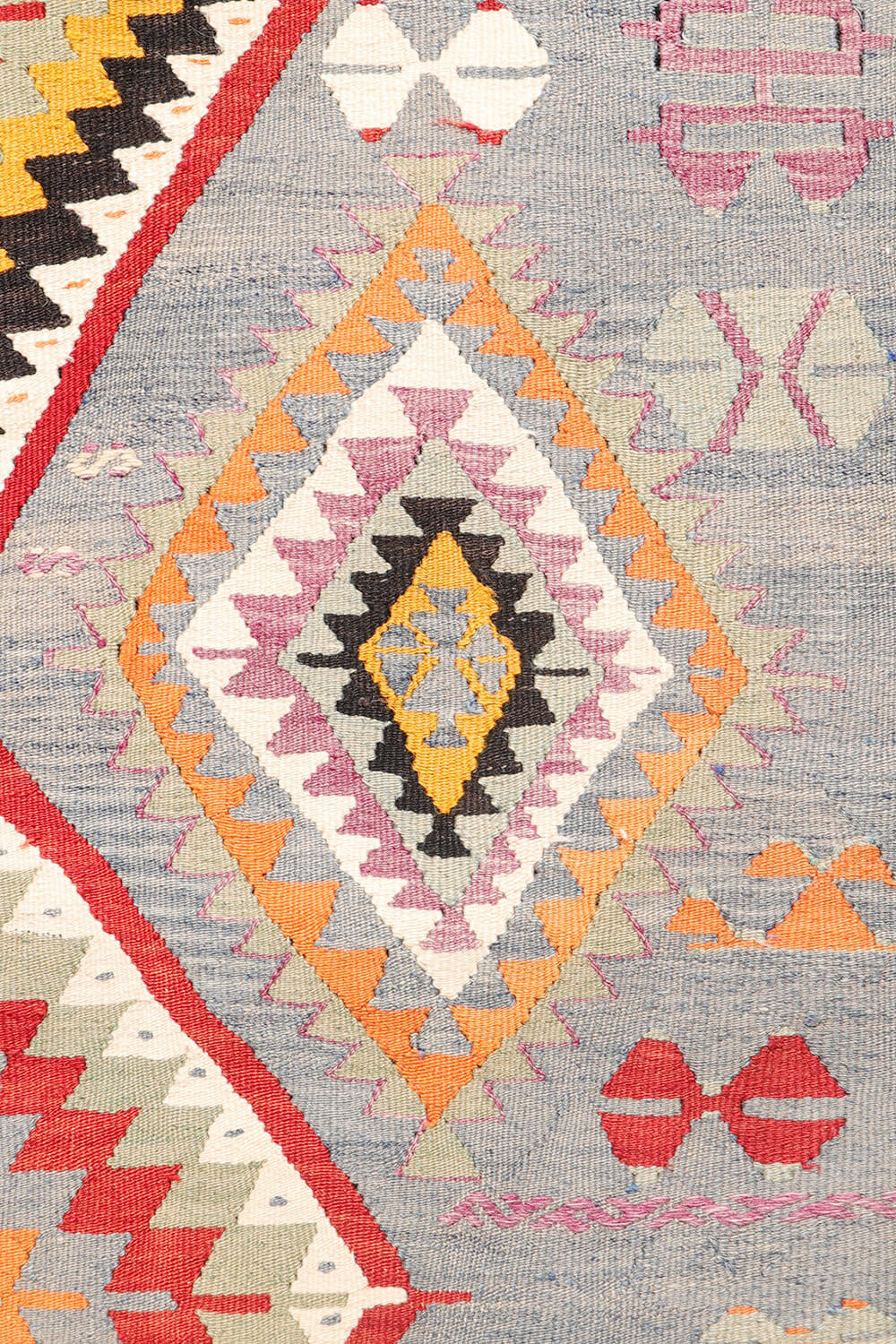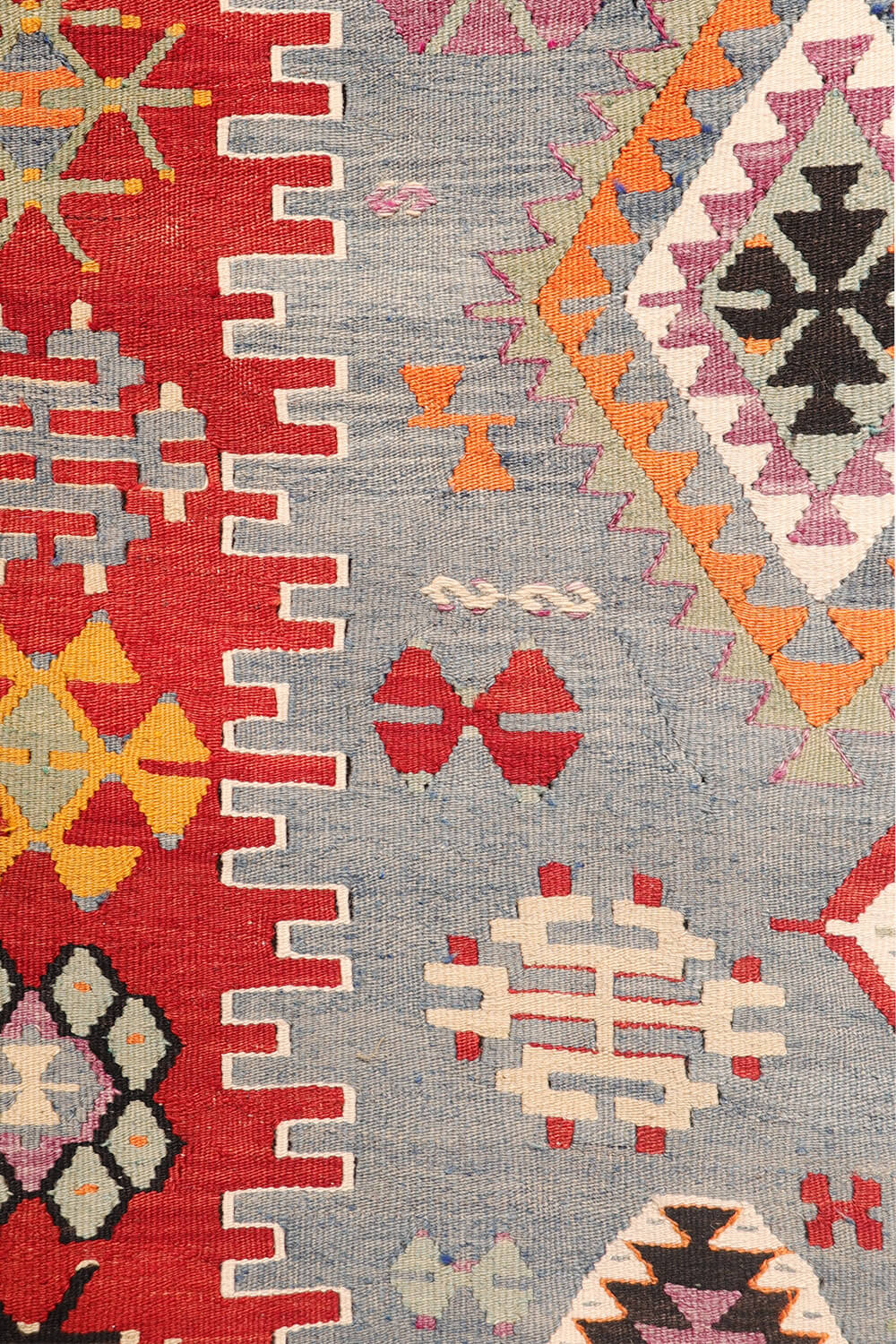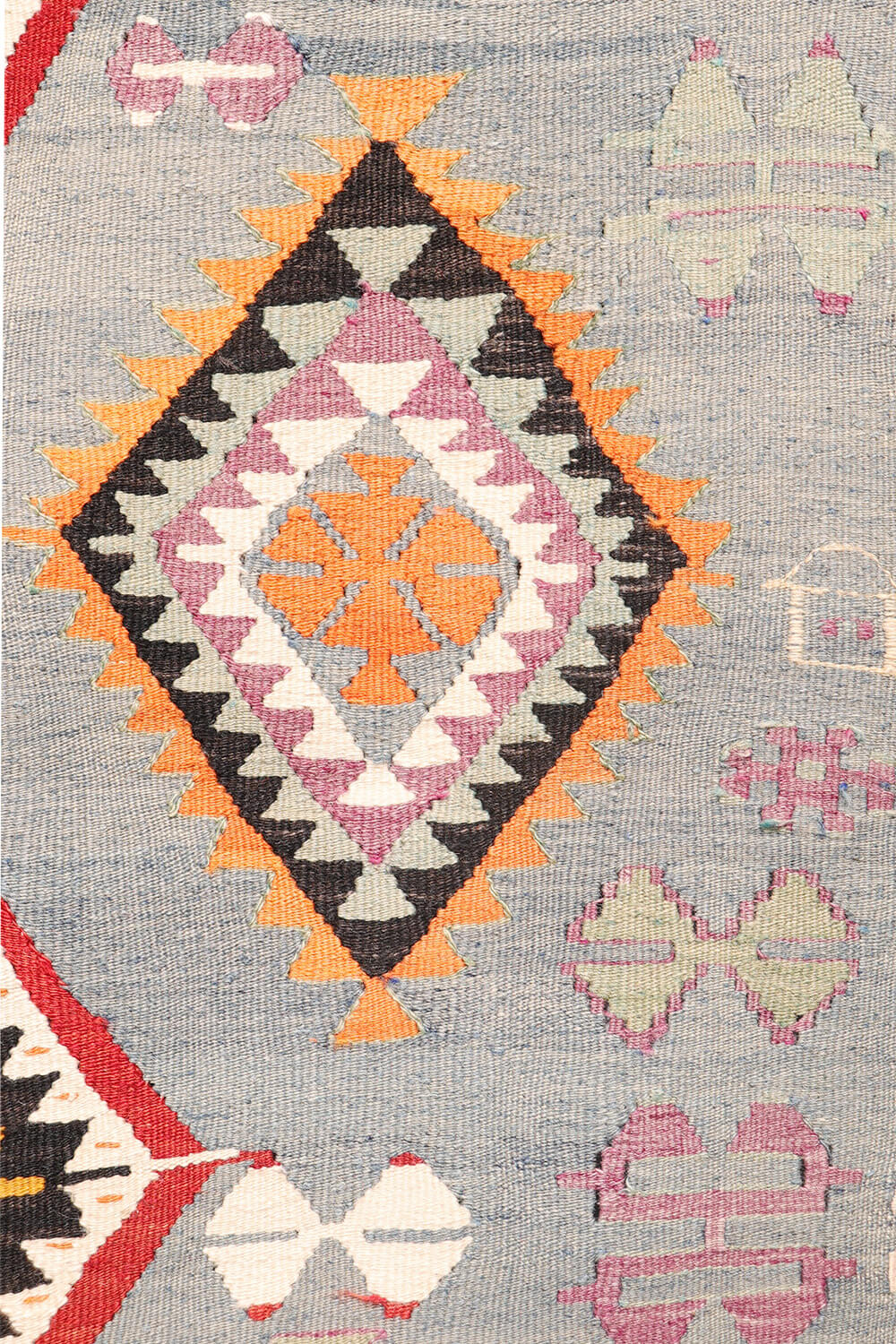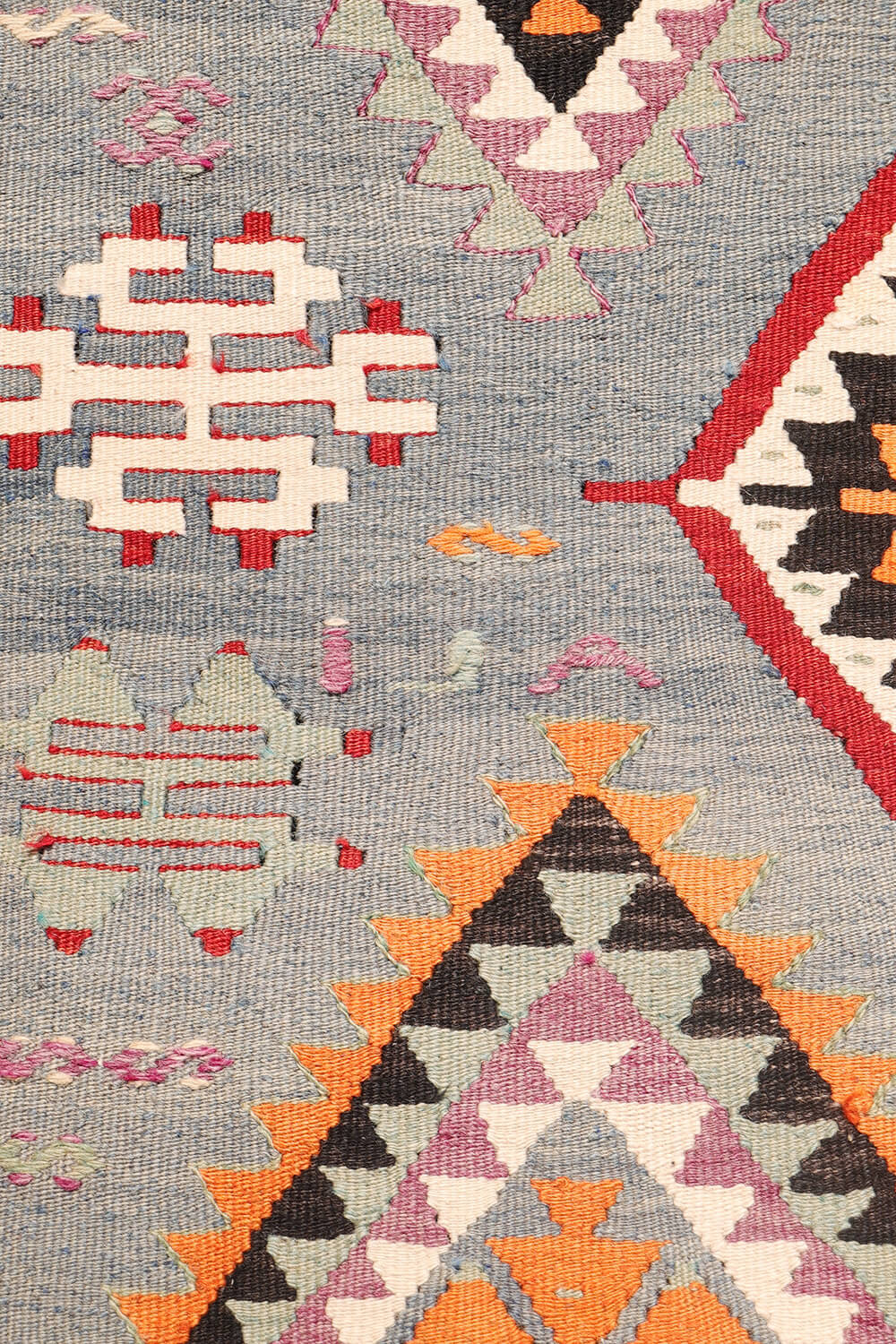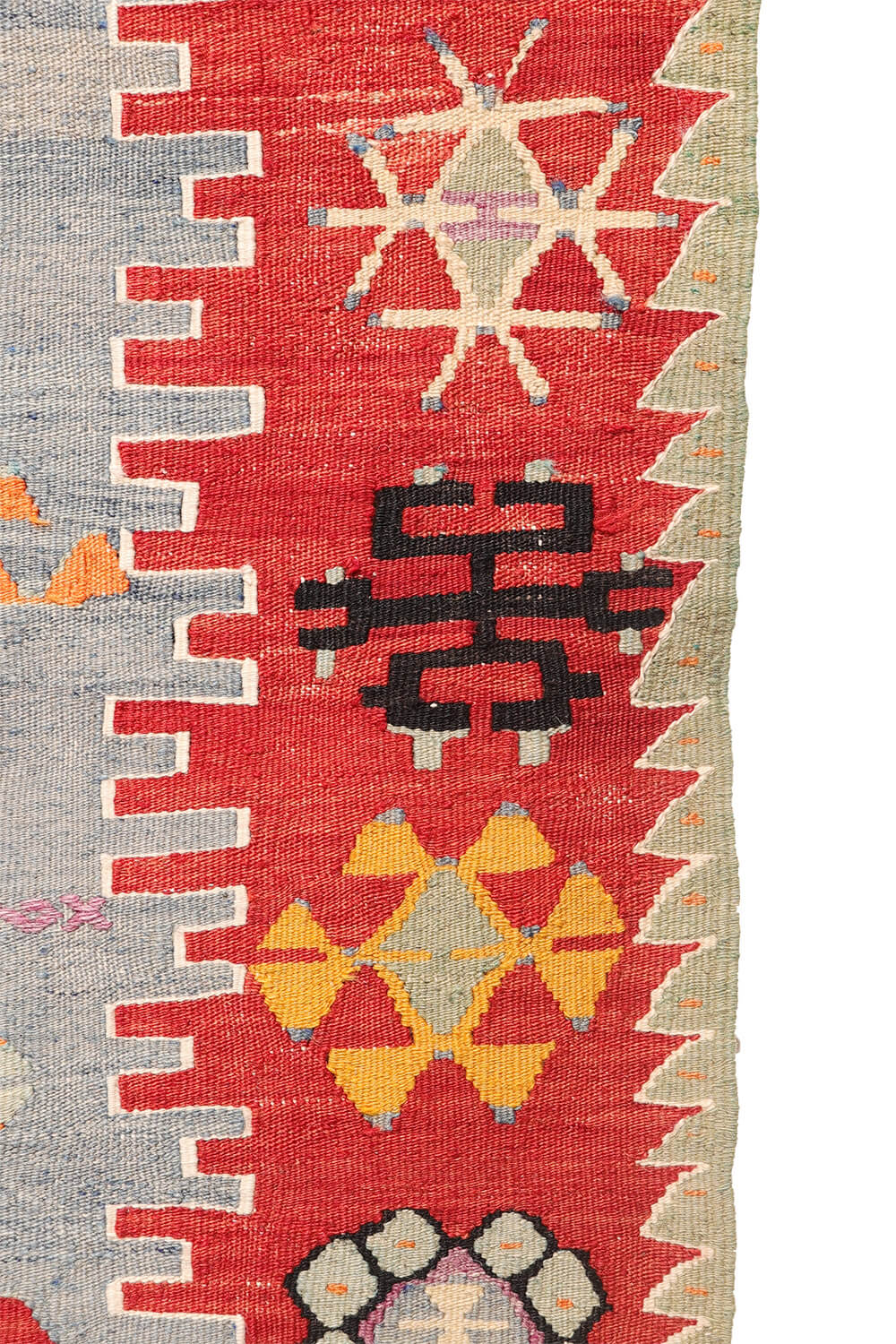1,350.00 €
Vintage Esme Kilim with Striking Oversized Medallions and Soft Blue Field
This vintage Esme kilim captivates with its vibrant yet balanced color palette and a sense of visual harmony. The standout feature is the series of oversized diamond medallions arranged along the central axis, each surrounded by smaller, similarly styled motifs. Set against a serene light blue ground, the motifs appear to float against the sky—giving the piece a light, airy presence.
An unusual detail lies in the border design. While many kilims feature continuous border patterns, this example breaks the mold: the side borders mirror each other, aswell as the top and bottom green borders—adding an unexpected touch of asymmetry and uniqueness.
The weaver has incorporated several motifs using the cicim technique, including the names “Ali” and “Yeter.” The presence of both a male and a female name suggests that this kilim may have been woven as part of the wedding dowry of Ali and Yeter, possibly to commemorate their union.
Subtle abrash (natural variations in dye) throughout the kilim adds depth and character, particularly within the blues and greens, enhancing its handcrafted charm.
Material: 100% hand-spun sheep wool
Size: 257×166 cms
Origin: Esme, Turkey
Date of weaving: 1970s
Kilims or Gilims are flatwoven textiles with a woollen weft on a woollen, goat hair or cotton warp. There are many different techniques and designs. The weaver normally works within a tradition of techniques, motifs and designs specific to a particular area or ethnic group. The designs relate to her natural surroundings, protection, fertility and the harmony of family relationships. Each weaver adds something from her own creativity and sense of composition. Kilims are often woven as part of a marriage dowry and can be used to create many different objects like storage bags, horse-blankets, baby carriers, blankets and wall and floor coverings.
This kilim was hand-woven on a simple loom by a village or nomadic weaver for her own use. Probably the weaver used wool from her own sheep. The wool was first cleaned, then hand-carded, hand-spun and finally dyed by hand, often using natural dye materials like roots, nuts, berries, fruits, flowers and plants. Kilims from the last quarter of the twentieth century mostly use synthetic dyes. This kilim would have taken many months to complete.
All our kilims selected in the country of origin and are professionally washed and restored before we import them directly from Iran, Turkey and Afghanistan. Natural patina and charming imperfections in design and colour (abrash) are highly valued characteristics of hand-woven kilims.
This piece is a beautiful example of traditional Anatolian weaving with a distinct personality.
Additional information
| Weight | 10.5 kg |
|---|
Subscribe and receive the lastest news
